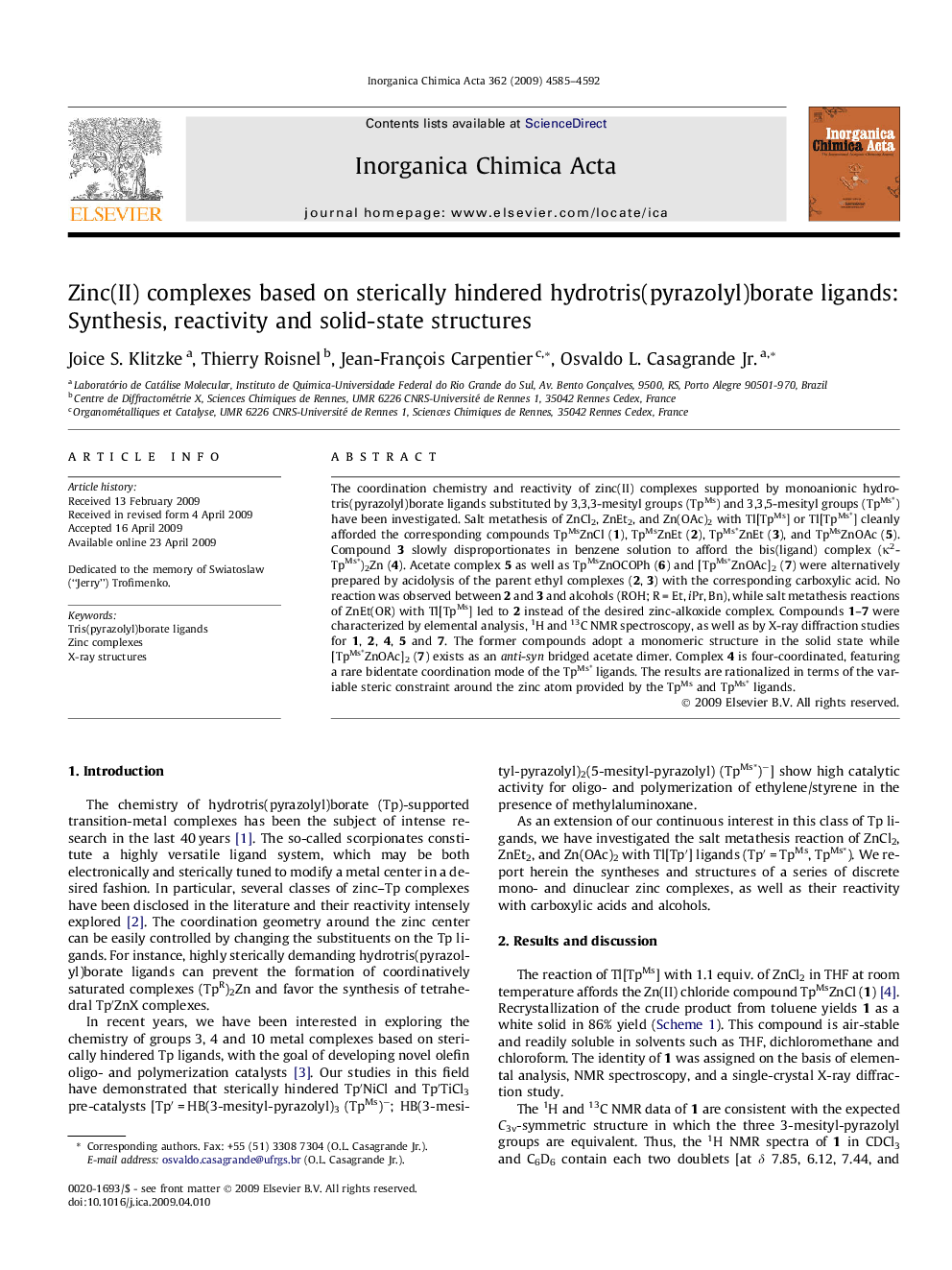| کد مقاله | کد نشریه | سال انتشار | مقاله انگلیسی | نسخه تمام متن |
|---|---|---|---|---|
| 1309579 | 975213 | 2009 | 8 صفحه PDF | دانلود رایگان |

The coordination chemistry and reactivity of zinc(II) complexes supported by monoanionic hydrotris(pyrazolyl)borate ligands substituted by 3,3,3-mesityl groups (TpMs) and 3,3,5-mesityl groups (TpMs∗) have been investigated. Salt metathesis of ZnCl2, ZnEt2, and Zn(OAc)2 with Tl[TpMs] or Tl[TpMs∗] cleanly afforded the corresponding compounds TpMsZnCl (1), TpMsZnEt (2), TpMs∗ZnEt (3), and TpMsZnOAc (5). Compound 3 slowly disproportionates in benzene solution to afford the bis(ligand) complex (κ2-TpMs∗)2Zn (4). Acetate complex 5 as well as TpMsZnOCOPh (6) and [TpMs∗ZnOAc]2 (7) were alternatively prepared by acidolysis of the parent ethyl complexes (2, 3) with the corresponding carboxylic acid. No reaction was observed between 2 and 3 and alcohols (ROH; R = Et, iPr, Bn), while salt metathesis reactions of ZnEt(OR) with Tl[TpMs] led to 2 instead of the desired zinc-alkoxide complex. Compounds 1–7 were characterized by elemental analysis, 1H and 13C NMR spectroscopy, as well as by X-ray diffraction studies for 1, 2, 4, 5 and 7. The former compounds adopt a monomeric structure in the solid state while [TpMs∗ZnOAc]2 (7) exists as an anti-syn bridged acetate dimer. Complex 4 is four-coordinated, featuring a rare bidentate coordination mode of the TpMs∗ ligands. The results are rationalized in terms of the variable steric constraint around the zinc atom provided by the TpMs and TpMs∗ ligands.
Zinc(II) complexes supported by TpMs and TpMs∗ ligands have been prepared and structurally characterized. The variable steric constraint around the zinc atom provided by the TpMs and TpMs∗ ligands is shown to have significant impacts, i.e., changes from monomeric to dimeric structures, and variable hapticity of the TpR ligands.Figure optionsDownload as PowerPoint slide
Journal: Inorganica Chimica Acta - Volume 362, Issue 12, 15 September 2009, Pages 4585–4592